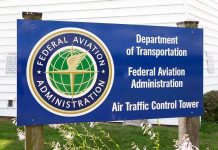
You won’t believe what workers at a former nuclear weapons site in South Carolina stumbled upon—a radioactive wasp nest, glowing with radiation levels ten times higher than federal safety limits.
At a Glance
- A radioactive wasp nest was found at the Savannah River Site, a Cold War-era nuclear facility in South Carolina.
- The nest emitted radiation levels ten times higher than federal safety limits.
- Officials claim the contamination is from legacy materials, not an active leak.
- Watchdog groups are questioning the transparency and adequacy of the official explanation.
Radioactive Wasp Nest Raises Questions at Former Nuclear Site
In July 2025, during a routine check at the Savannah River Site (SRS), workers discovered a wasp nest near an old waste tank emitting radiation levels alarmingly high. The nest, found at this Cold War-era site, which spans 310 square miles, highlights the persistent challenges of managing legacy contamination. Officials were quick to assert that there is no active leak and attribute the radiation to old materials. The nest was promptly removed and disposed of as radioactive waste, with the surrounding area reportedly testing clean.
Radioactive wasp nest found at American Cold War-era nuclear bomb site https://t.co/bOjMPRBRl1 pic.twitter.com/XqdMl8B46p
— New York Post (@nypost) July 30, 2025
The discovery of a radioactive wasp nest—a bizarre yet troubling incident—has prompted renewed scrutiny into the site’s management. While the Department of Energy (DOE) oversees operations at SRS, watchdog groups and local communities demand greater transparency and reassurance regarding safety protocols. The peculiar case of radioactive wasps underscores the unpredictable ways contamination can persist long after the cessation of nuclear activities.
Legacy of Contamination: A Persistent Challenge
The Savannah River Site, established in the 1950s for nuclear weapons production, has been a hotspot for radioactive contamination due to its Cold War activities. As a Superfund site, it has been under intense remediation efforts since the 1990s, with its focus now on environmental cleanup and nuclear research. Despite these efforts, the site’s history continues to cast a long shadow. Routine radiation checks are standard practice, yet the emergence of a radioactive wasp nest is a reminder of the site’s complex contamination issues.
Radioactive particles from the site’s past can be inadvertently spread by insects and animals, complicating efforts to maintain safety. The incident has prompted calls for renewed vigilance and perhaps a reevaluation of wildlife management practices at such facilities, ensuring that even seemingly innocuous creatures do not become vectors of contamination.
Stakeholders Call for Transparency and Accountability
Various stakeholders are now in the spotlight following this discovery. The DOE, tasked with regulatory compliance and public reassurance, faces pressure from watchdog groups like the Savannah River Site Watch. These groups are vocal about the need for transparency and accountability, questioning the DOE’s explanation and the completeness of their investigation. Local communities living near SRS have vested interests in ensuring their safety and the environmental integrity of their surroundings.
While the DOE maintains that there is no current threat to public safety, the skepticism from watchdog groups is palpable. The incident serves as a reminder of the delicate balance between maintaining public trust and managing the complex legacy of nuclear contamination. Effective communication and transparency are essential in addressing public concerns and ensuring the safety of both the environment and the communities nearby.
Implications and the Road Ahead
The short-term implications of the radioactive wasp nest incident may appear minimal, with no immediate health risks reported. However, the long-term effects could be significant, highlighting the need for ongoing vigilance and robust monitoring practices at former nuclear sites. The incident underscores the unpredictable nature of legacy contamination and the importance of continuous oversight.
Economically, the discovery could lead to increased scrutiny and possibly additional costs for site monitoring and cleanup. Socially, it may heighten public concern and mistrust regarding the safety of such sites. Politically, this could prompt calls for enhanced oversight or independent reviews of DOE practices, ensuring that the lessons learned from this incident lead to more stringent safety and transparency measures in the future.


















